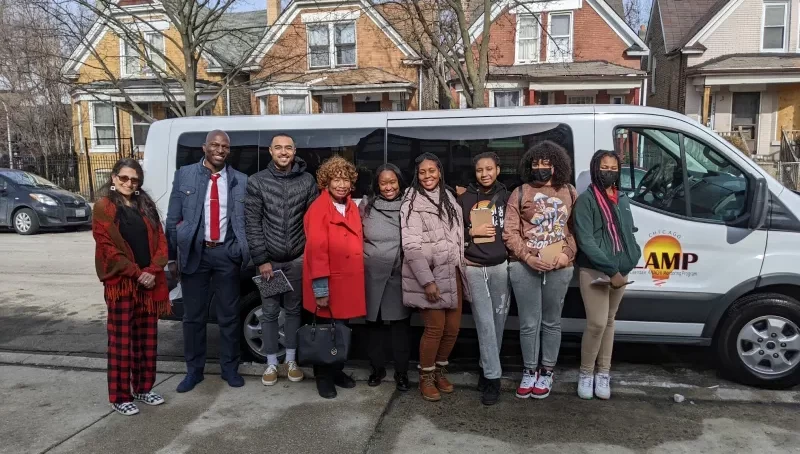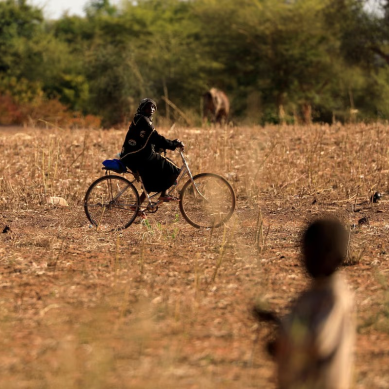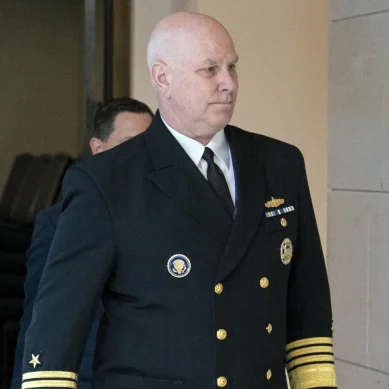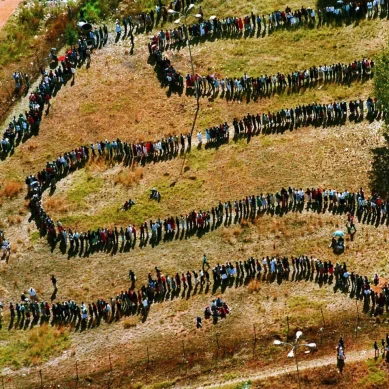
In the heart of Chicago’s historic North Lawndale neighbourhood, there’s a bustling haven where the seeds of global citizenship are sown. It’s not a city hall or a community centre, but Webster Elementary — a modest PK-8 school that serves as a beacon of safety for its 210 students.
Three years ago, Nilufar Rezai, the school’s full-time counsellor, launched the “Webster Caring Theme of the Month” under the leadership and support of Principal Khalid Oluewu.
The initiative was designed to help the students consider their roles in the world, emphasising that their impact could reach beyond their immediate community to influence their city, their environment, and, ultimately, humanity.
Two years into the programme, tragedy struck. Two Webster Elementary graduates were shot and killed on their front porches within two months of each other. This sobering reality underscored the urgency of Rezai’s work, prompting her to redouble her efforts to change the narrative and take a stance against violence and trauma.
North Lawndale is nearly 83 per cent Black, and 44 per cent of residents earn less than $25,000 per year, so the community is no stranger to the systemic challenges created by anti-Blackness and the extremes of wealth and poverty. Today, that narrative persists. North Lawndale’s crime rates are 154 per cent higher than the national average, and violent crimes are a staggering 642 per cent higher.
Far too often, the narrative on violence and public safety is focused on individual, relational, and community-level factors, including youth risk-taking behaviours, poor parenting, and a lack of cohesion among neighbours, instead of examining structural factors that have weakened the mechanisms that keep communities safe and healthy.
Although “root causes” has become a popular term in light of present public health problems, seldom are the processes explicitly outlined to help bring light to the black box of “systemic challenges” connected to the black-white wealth gap and the disparities of life expectancy among these races.
Webster’s Anti-Violence Youth Committee members with co-facilitators Counsellor Rezai, RP Coach Harris, and Selene Gonzalez of Organic Oneness.
In cities like Chicago, the origin story of our present-day burden to keep our children and neighbourhoods safe began over 100 years ago when white residents rivalled their Southern brethren by using violence to constrain black social and economic mobility.
This violence was coined by James Weldon Johnson as the Red Summer, which fatally victimised nearly a thousand Black people across 25 cities in 1919 and left thousands more homeless and bereft of Black-owned businesses.
The Black blood drawn in these Northern non-Jim Crow states gave a region pretending not to be complicit in Southern white supremacy a bad look. So instead of continuing to use the Southern style of physical violence to put blacks in their place, government, and private real estate stakeholders used policy and private practices to sully black mobility. The North Lawndale community served as a case study for these actions.
Students at Webster Elementary are trying to write a new story for their community.
Black residents in North Lawndale – who successfully overcame the racists housing practices of restrictive covenants, federally-backed redlining, and inaccessibility to FHA loans promoting suburban sprawl and white flight – found that even when they leveraged their hard earn money to create generational wealth through homeownership, they were exploited by white investors who bankrolled the selling of fake mortgages.
This practice, known as contract selling, impacted 80 per cent of Black residents in North Lawndale and presently accounts for a $3 billion wealth gap between Black and white Chicagoans. These horrors have been vividly captured by Ta’Nehisi Coates’ 2014 report, “The Case for Reparations” in The Atlantic, and Samuel Dubois Cook Centre’s 2019 report, The Plunder of Black Wealth in Chicago.
During this time, North Lawndale was home to some of the largest employers in the City of Chicago, including Western Electric, International Harvester and Sears and Roebuck. Yes, the original Sears Tower was, in fact, located in North Lawndale. However, like the white residents, these key employers for Black Chicagoans soon joined the white exodus.
Despite these systemic barriers, activism and resistance to these factors have been keys to survival. Some examples include the birth of the Contract Buyers League, established to combat the predatory housing contracts, as well as the super gang, the Vice Lords. The Vice Lords had shed their destructive gang territory-based violence and rode the wave of civil rights activism to invest in community businesses, secure federal and philanthropic funding, and support Martin Luther King’s efforts to rally other youth in his fair housing cause in Chicago.
Fifth and seventh-grade AVYC members, counsellor Rezai, principal Oluewu, and RP coach Mr Harris visit possible Chicago Park District sites for the monument/garden with Alderman Monique Scott and Dr. Betty Greene from LAMP.
Nevertheless, like in the film The Matrix, the systems of oppression consistently reboot. Mayor Richard J. Daley rallied local and national support to hyper-invest in policing and effectively infiltrate progressive civil rights action to further constrain and harm black bodies, including the city’s involvement in Chairman Fred Hampton’s assassination.
Fifty years later, in addition to a 600 per cent increase in incarceration while crime and violence continue to rival the high water mark of the 1970s, North Lawndale visually is a “bombed out” community with multiple football fields’ yardage of empty lots, which are consequences of divestment and the structural constraints of white flight of businesses and residents, school closings, and home foreclosures.
This harsh reality is the backdrop against which the students at Webster Elementary are trying to write a new story for their community.
With the AVYC, Rezai and her students are working to implement tangible anti-violence strategies. This includes creating a “safe zone” around the school and forging connections with local churches and organizations.
If we’re serious about bringing about racial justice, about breaking the chains of structural inequity, we need to pay attention.
Their strategies also extend to creating a memorial garden at Violet Park in honour of young lives lost to violence. Organic Oneness, a community social justice nonprofit I serve as board chair of, is submitting a pre-proposal to the 2023 America the Beautiful Challenge to fund this initiative, signalling the convergence of environmental justice, climate action, food justice, and anti-violence efforts.
The students’ proactive efforts have also not gone unnoticed across the city. Their dedication has garnered the backing of the North Lawndale Alderman and the Chicago Park District. But their work is far from over. They continue to push for empathy, awareness, and commitment within their community, proving that even the youngest citizens can be catalysts for change.
There’s an undeniable power in this new vision for Webster Elementary. These efforts aren’t just teaching students to read and write. Instead, these kids are learning that they can shape their own narratives and that their voices can echo far beyond the confines of their classrooms. As the students march for peace this year, they are demonstrating their commitment to justice and their readiness to engage as global citizens.
Webster Elementary is a testament to the fact that addressing systemic violence isn’t merely about reacting to crises as they arise but pre-emptively cultivating a culture of care, consciousness, and citizenship.
If we’re serious about bringing about racial justice, about breaking the chains of structural inequity, we need to pay attention. We need to listen to these young voices echoing through Webster Elementary’s halls and North Lawndale’s streets. For here, within these classrooms and the AVYC’s work, lies a blueprint for the future.
- An Afro News report











